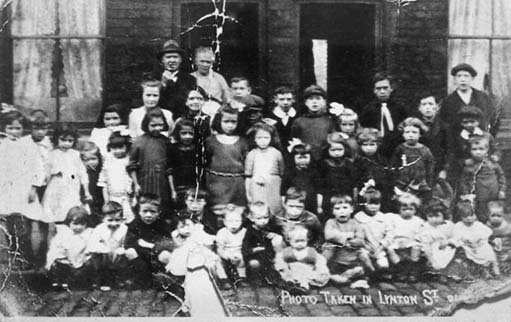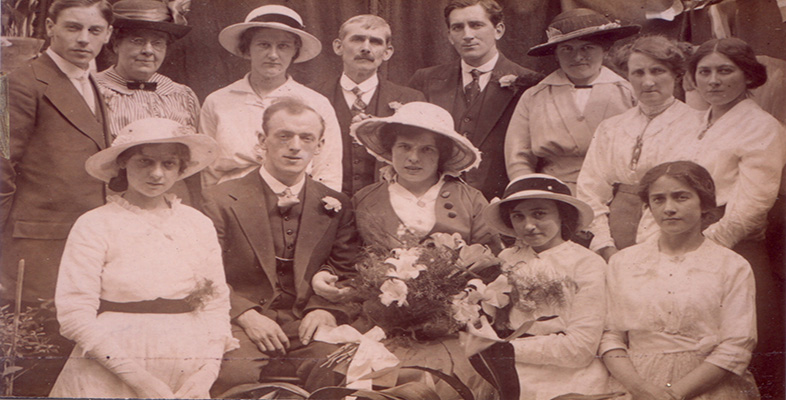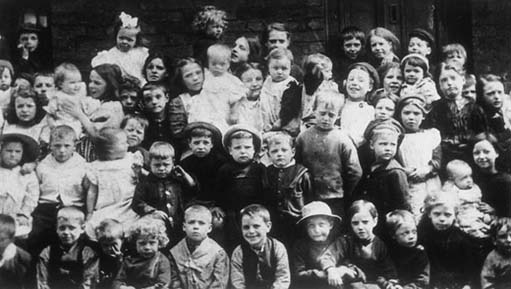6.2.3 Groups
The large group portrait came to commercial prominence in the 1880s, probably as a result of the widespread introduction of dry plate negatives. These negatives could be bought ready made over the counter. They did not require immediate processing and they reduced exposure times significantly. The group portrait involved the production of a single negative and a potential sale to each member of the group. Customer costs were kept low without injury to the photographer's profits. School, work and leisure group portraits became regular components of the family album.

Children living in deprived urban areas in the 1920s and 1930s could find themselves in street group photographs such as Images 86 and 87. Their families could not afford individual portraits of their children but could find the few pence charged for a single copy of the group picture. The mother of a child in the Lynton Street portrait (Image 86) was bringing up 3 children on a First World War widow's pension. Lynton Street was situated near the entrance to the Manchester Docks. This may account for the presence of a single black child.
The significance of the Waterloo Street group (Image 87) is that it features Robert Roberts who in later life wrote The Classic Slum, an account of life in Edwardian Salford that has become required reading for social historians of the period.

